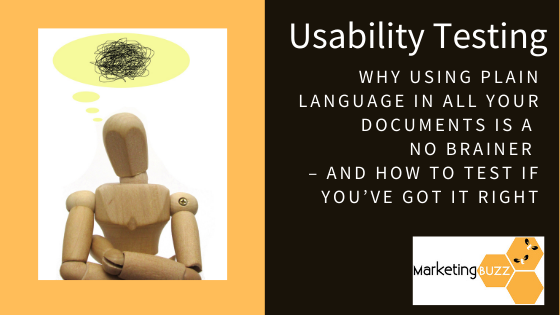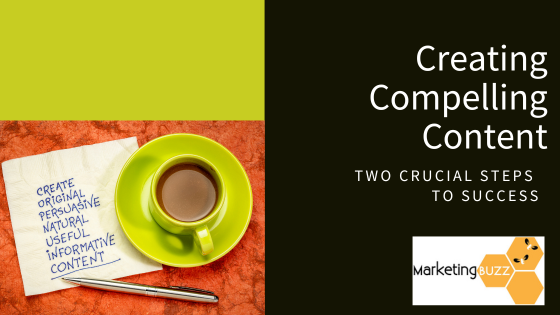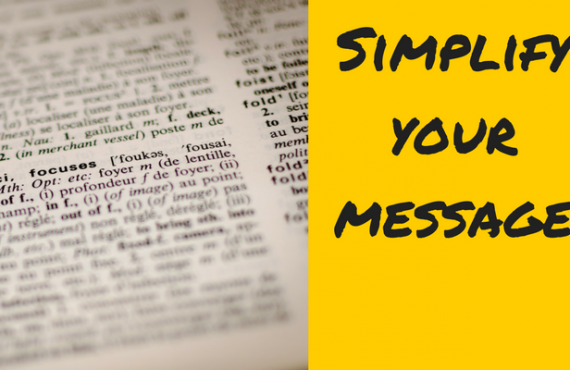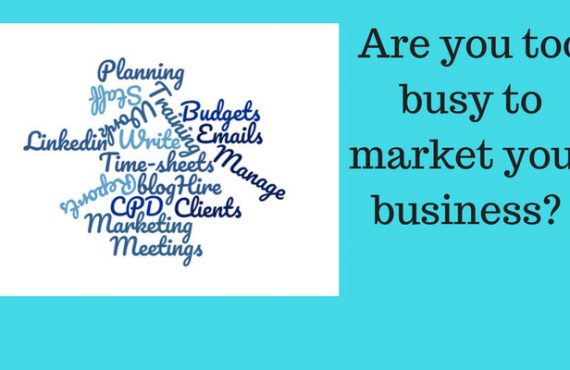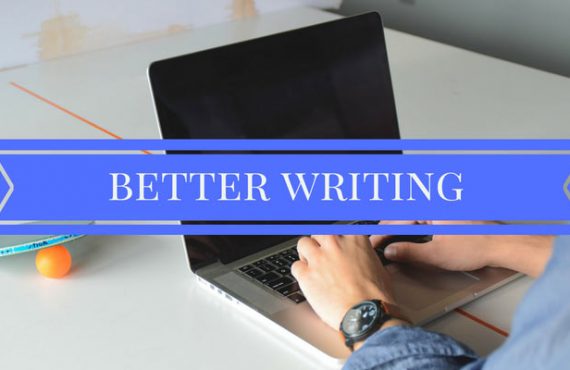Have you ever read a document where you had no idea what they were talking about?
You’ve got to wonder why some people make it SO HARD for their audience to read and understand their brochures, forms or reports, don’t you? (Yes, I’m looking at YOU Centrelink forms…)
The purpose of using plain language is that it allows people to find, understand and use what you write. To make your writing more usable.
What’s usability?
Usability is all about understanding.
- Does the reader get the meaning of the messages you’re trying to relay?
- How does the text make them feel?
- Can they get some ‘use’ out of the message – are they able to follow your instructions and DO something (whatever you’re asking them to do)
Usability testing is often associated with websites, but it’s also applicable to paper-based documents.
In fact, UX testing – user experience testing – is now a growing area of expertise, especially in the online space.
The dangers of not testing paper documents for usability
Everything you write has a purpose.
- It gets people to do something
- To help people make good decisions
- To answer people’s questions
Sometimes the consequences of people not understanding what you write can be dire.
People or businesses could lose money, make bad decisions, lose trust. A less than clear message can cause misunderstandings. Or, create more work when you realise you have to write something else to recover the message.
People might also give up on following your message. They may become frustrated, angry even.
It’s harder to move onto the next document you want them to action if they didn’t understand the first document they read.
Whether it’s a report, brochure, bill, instructions to operate a kitchen gadget, or a press release, it’s important to test whether your document passes the usability test.
How is usability different from legibility and readability?
Legibility is about the mechanics of reading – is the font size big enough? Does the contrast between the colour of the paper/background and type make it easy to read?
Readability is also about whether a person can read and understand the text. Readability scores often relate to the ability of the reader to comprehend the text, comparing it to the average grade levels of students who should understand the text.
Commonly used readability measures look at whether the language is too technical for its audience.
Does it use jargon that the reader may not understand? Is the text ‘dense’, with long sentences and even longer paragraphs?
Testing the usability of your documents
Making sure our written words accomplish their purpose means:
People can find what they need, understand what they find, and use what they need to meet their needs.
Dr. Ginny Redish, usability and plain language expert and author of Letting go of the Words, gives three quick, easy techniques to test a document’s usability.
To prepare for your usability test…
- The first step is to prepare a draft of your document.
- Enlist a few people to take part in your test. They should be representative of those who will use your document.
- Test one person at a time – it’s not a group activity.
- Always treat your participants with respect. Make sure they’re comfortable and watch their body language.
- Record your test (audio/video) – and remember to get consent!
- Set time expectations for your participants … and listen! Ask questions if needed.
The 3 usability techniques to help you clarify your message
-
Tell me in your own words.
This is also called the Paraphrase technique.
You’re asking people to go through the document to check whether they understand the message. This is a good technique to use for relatively short documents – a letter, notice, or one-page fact sheet.
- You can do this remotely (they don’t have to be in the same room as you). This means you can send the document to someone by email, for example. But remember to your email just before beginning the session so they don’t pre-read the document.
- Clearly explain the process to the person.
- Have people read a section of the document – then ask them to tell you what that meant. Do they stumble over the meaning? Did they ‘get it’? Their comments of what they did or didn’t understand.
- You are the note taker. At the end of the session, you need to know exactly which words and phrases the person was unable to understand – and which messages were clear.
- What you’re looking for is their emotional response.
It’s good to remember that everything we write is part of a conversation. And the more you write like you were talking to an actual person, the more successful your communications will be.
It often takes several drafts to get to the point where you’re happy with your document.
-
Mark positives and negatives
This method was developed in the Netherlands. Once again, it focuses on a person’s understanding of your message.
- First, you send the document to the person you’re testing along with the instructions.
- Introduce and explain the process. Let the person know what’s involved in the task, how long it will take, and the fact that the session will be recorded.
- As they read through the document, you’re asking them to mark pluses and minuses (‘+’ and ‘-‘) against their ability to understand aspects of the document. They may also add comments to explain their grading of the word or phrase.
- A positives mark indicates: they can understand it easily and think well of the sender.
- A negative mark indicates the opposite: the text causes them to be concerned because they don’t understand what’s being said.
- You can specifically ask about the effect of the language so you can see them demonstrate an emotional response.
- Once they’ve done the mark-up, make sure you both have a copy of the marked-up document so you can talk to them about it.
- We need to understand the problem before we jump to the solution. So, as you’re working through a document with a person, just listen. Ask for clarification if you need it. You may, for example, ask them to expand on their comments.
| When you want to find out more … | Try this |
| Let the participant know you’re listening. | “uh-huh”
“I see.” “Thank you. That’s useful.” |
| Clarify something | Can you explain [xxx] a little more? |
| Get more details | Please tell me more about that. |
| Explore rationales | What about what you’ve highlighted there [pointing out the place] prompted you to mark that with a [plus or minus, whichever it is]? |
| If the participant stops talking, but you think they have more to say | Paraphrase the last bit they said. And wait. (This is “active listening”). |
-
Find an answer or do something – usually used on a website.
This third usability technique is looking at how easily they can find and understand the information in a document.
It’s a useful technique to use with a longer document, like a report.
You’re looking at the organisation of the information and whether it supports good communication. Things like ‘do the headings work’ and does the layout help the person understand the message?
- With this technique, don’t let the person open the document before you start the session.
- And remember to set the scenario… Ask them: What’s your first impression? What does the message mean to you? If there’s something confusing, what specifically is it about the message that’s hard/easy to understand?
Whichever method you use to test usability, having ‘real’ users read and test your messages gives you an extra opportunity to better understand your audience.
But what if you can’t test with users?
One way is to create a persona and put yourself in the shoes of your audience.
Then, use questions that you would ask a ‘real’ user to assess your document.
Questions like:
- What is your day like today when you get this document?
- How do you get it?
- What do you do with it when you first get it?
- Do you read it right away?
- Do you read all of it?
- What part of it do you go to first?
- How do you react to it?
- Does it answer your questions?
- What are you going to do now?
You’ll l find more great plain language references here:
NSW Government Guide: Write in Plain Language
